This article was co-authored by Chris M. Matsko, MD. Dr. Chris M. Matsko is a retired physician based in Pittsburgh, Pennsylvania. With over 25 years of medical research experience, Dr. Matsko was awarded the Pittsburgh Cornell University Leadership Award for Excellence. He holds a BS in Nutritional Science from Cornell University and an MD from the Temple University School of Medicine in 2007. Dr. Matsko earned a Research Writing Certification from the American Medical Writers Association (AMWA) in 2016 and a Medical Writing & Editing Certification from the University of Chicago in 2017.
There are 8 references cited in this article, which can be found at the bottom of the page.
This article has been viewed 316,334 times.
Ingrown hairs are a pesky and painful problem for many people. They occasionally flare up on sensitive areas of your body, including your nose. If you find an ingrown hair in your nose, it’s relatively easy to treat it and prevent another from occurring.
Steps
Treating an Ingrown Nose Hair
-
1Figure out if you have an ingrown nose hair. Ingrown hairs happen when you shave or tweeze hairs and they grow back into your skin instead of out of it.[1] If you shave or tweeze your nose hairs, checking the internal and external nasal areas will help figure out if you have an ingrown nose hair.
- An ingrown nose hair may present itself as an inflamed area with or without pain, and there may be a tiny, pimple-like bump where you removed the hair and it is trying to grow back.
- You may see these symptoms either on the outside or inside of your nose.
- Make sure to not stick your fingers or any other objects deep inside your nasal cavity. Instruments can lodge themselves in your nose, causing severe harm to you.
- If you can’t locate the source of the pain or your ingrown hair, either leave it alone or see a doctor.
-
2Leave the ingrown hair alone. Most ingrown hairs will heal on their own. Leaving the ingrown hair in your nose will keep it from getting further inflamed as well as eventually healing it.[2]
- If an ingrown nose hair is especially painful or problematic, you can use other self-cures to treat it including hot compresses and anti-bacterial ointments.
Advertisement -
3Use hot compresses to relieve the ingrown hair. Using warm to hot compresses can kill bacteria in an ingrown hair and reduce the pain. Try this treatment before you opt for a more invasive option such as releasing the hair.[3]
- Heat two glasses of water to a comfortable, hot temperature that won’t burn your skin. Dip a soft cloth or cotton swab in the water and put it on the affected part of your nose. When the cloth or swab cools, repeat the process once more. Do this procedure two to three times per day.
- You may gently insert the warm cloth or swab inside your nose if the ingrown hair isn’t deep within your nasal cavity. Press the cloth or swab gently against the ingrown hair for a few minutes.
- Gentle, circular rubbing the inside or outside area of your nose affected by the ingrown hair may help release it. It’s not unusual to see a small amount of pus or blood if you do this.
-
4Release the hair with a sterile needle. If you feel comfortable and the ingrown nose hair is really bothering you, use a sterile needle to release the tip of the hair. This will help you remove it and any debris such as dead skin that may be inside of it.[4]
- If you can see the hair, then it’s safe to release it.
- After you’ve washed the area, insert a sterilized needles under the hair loop or loops and gently lift the ingrown hair tips either with your fingers or tweezers.
- Make sure that if you use a sterilized needle to release the hair that your skin is warm and moist. This will soften your skin and make it easier to remove the hair.
-
5Apply an antibiotic ointment to the affected area. Applying an antibiotic ointment or hydrogen peroxide on the area of ingrown hair will prevent infection. It also helps to reduce swelling and pain and enhance the healing.[5]
- You can use anti-biotic ointments such as neomycin, polymyxin B, bacitracin to prevent infection.[6]
- These are available at most drug and grocery stores and their online retail sites.
-
6Stop shaving, tweezing or waxing until the skin heals. While you’re still suffering from an ingrown nose hair, it’s important to not shave or tweeze other hair in the area until it heals. Continuing to do these activities can not only cause further inflammation and pain, but also cause infections.[7]
- You can tweeze only if it’s to release the ingrown hair as described above. Otherwise, leave the area alone.
-
7See a doctor if the ingrown nose hair doesn’t heal. If your ingrown nose hair doesn’t heal within a few days and it gets very painful, see a doctor. He can make sure you don’t have a serious infection, remove the hair, or discuss other treatment options with you.
- Additional treatments include retinoids, corticosteroids, and antimicrobials.
Preventing Ingrown Nose Hairs
-
1Keep your nose clean. Bacteria can inflame and infect ingrown hairs, and the nose is a prime location for bacteria growth. Keeping your nose clean both inside and out will inhibit the growth of infection-causing bacteria and help prevent ingrown hairs.
- When you are sick, blow your nose completely into a tissue.
- Don’t pick your nose. Your fingers can introduce bacteria into your nose that will infect an ingrown hair.
-
2Use a trimmer or scissors to remove nose hair. Use either a trimmer designed specifically for the nose or a small pair of circular-ended scissors to groom your nose hair. These will keep you from cutting too closely to your skin, which encourages ingrown hairs.[8]
- You can buy nose hair trimmers and small scissors at drug stores or department stores either online or in stores.
- The best way to get at pesky nose hairs is to gently make a pig’s nose by pressing backward on the tip of your nose. This will help so see inside of your nose and make you less likely to cut yourself.
- Make sure to cut only those hairs sticking out and not any inside your nose, which help act as a barrier between your respiratory system and the outside world.
-
3Use a depilatory cream. A depilatory cream, which is a chemical hair remover, is another method to remove nose hairs effectively while helping to prevent ingrown hairs. These can be harsh, so test it on your skin before you use it to make sure it won’t burn the skin around your nose.[9]
- Do not use depilatory creams inside your nose, which can cause serious harm.
- Leave hair inside your nose alone as it helps keep out bacteria.
-
4See a doctor for chronic ingrown hairs. If you find that you frequently have ingrown nose hairs, see your doctor to rule out conditions such as hormonal abnormalities. Your doctor can also help you find the best treatment and prevention for your chronic ingrown nose hairs.
- If you’re a woman with excessive ingrown hairs, it may be a sign of hirsutism or polycystic ovary syndrome, both of which are treatable.[10]
Expert Q&A
Did you know you can get expert answers for this article?
Unlock expert answers by supporting wikiHow
-
QuestionCan you use Neosporin to treat an ingrown nose hair?
 Chris M. Matsko, MDDr. Chris M. Matsko is a retired physician based in Pittsburgh, Pennsylvania. With over 25 years of medical research experience, Dr. Matsko was awarded the Pittsburgh Cornell University Leadership Award for Excellence. He holds a BS in Nutritional Science from Cornell University and an MD from the Temple University School of Medicine in 2007. Dr. Matsko earned a Research Writing Certification from the American Medical Writers Association (AMWA) in 2016 and a Medical Writing & Editing Certification from the University of Chicago in 2017.
Chris M. Matsko, MDDr. Chris M. Matsko is a retired physician based in Pittsburgh, Pennsylvania. With over 25 years of medical research experience, Dr. Matsko was awarded the Pittsburgh Cornell University Leadership Award for Excellence. He holds a BS in Nutritional Science from Cornell University and an MD from the Temple University School of Medicine in 2007. Dr. Matsko earned a Research Writing Certification from the American Medical Writers Association (AMWA) in 2016 and a Medical Writing & Editing Certification from the University of Chicago in 2017.
Family Medicine Physician
-
QuestionHow do I remove hair growth under my nose and prevent it from growing back?
 Chris M. Matsko, MDDr. Chris M. Matsko is a retired physician based in Pittsburgh, Pennsylvania. With over 25 years of medical research experience, Dr. Matsko was awarded the Pittsburgh Cornell University Leadership Award for Excellence. He holds a BS in Nutritional Science from Cornell University and an MD from the Temple University School of Medicine in 2007. Dr. Matsko earned a Research Writing Certification from the American Medical Writers Association (AMWA) in 2016 and a Medical Writing & Editing Certification from the University of Chicago in 2017.
Chris M. Matsko, MDDr. Chris M. Matsko is a retired physician based in Pittsburgh, Pennsylvania. With over 25 years of medical research experience, Dr. Matsko was awarded the Pittsburgh Cornell University Leadership Award for Excellence. He holds a BS in Nutritional Science from Cornell University and an MD from the Temple University School of Medicine in 2007. Dr. Matsko earned a Research Writing Certification from the American Medical Writers Association (AMWA) in 2016 and a Medical Writing & Editing Certification from the University of Chicago in 2017.
Family Medicine Physician
References
- ↑ https://my.clevelandclinic.org/health/diseases/17722-ingrown-hair
- ↑ https://www.healthdirect.gov.au/ingrown-hair#treatment
- ↑ https://www.altonmemorialhospital.org/Health-Library/View-Content?contentTypeId=85&contentId=P00294
- ↑ https://www.healthdirect.gov.au/ingrown-hair#treatment
- ↑ https://www.nhs.uk/conditions/ingrown-hairs/
- ↑ http://www.ncbi.nlm.nih.gov/pubmed/3585263
- ↑ https://my.clevelandclinic.org/health/diseases/17722-ingrown-hair
- ↑ https://wexnermedical.osu.edu/blog/should-i-trim-nose-hair
- ↑ https://ucfhealth.com/health-tips/expert-advice-ingrown-hairs/
About This Article
To treat ingrown nose hairs, avoid touching, shaving, or tweezing the area, since this will cause more inflammation and possibly introduce bacteria. Next, apply an antibiotic ointment or hydrogen peroxide to the affected area with a clean cotton swab to prevent infection, reduce swelling, and ease any pain you're experiencing. You can also apply a warm compress to the affected area 2-3 times per day for pain relief. If your ingrown nose hair doesn’t heal within a few days, or if it gets very painful, it's best to see your doctor to discuss treatment options. For tips on preventing ingrown nose hairs, read on!





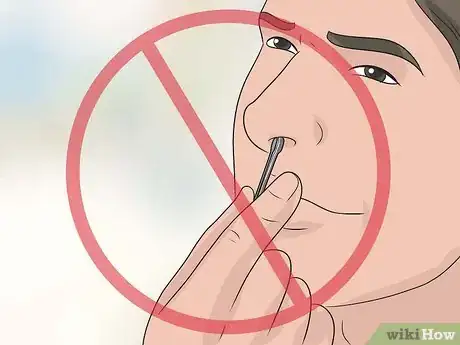
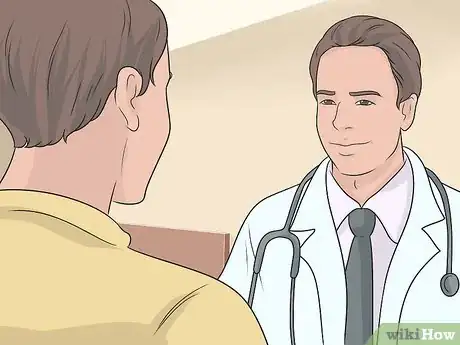
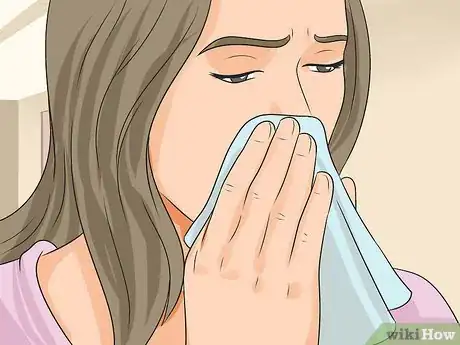
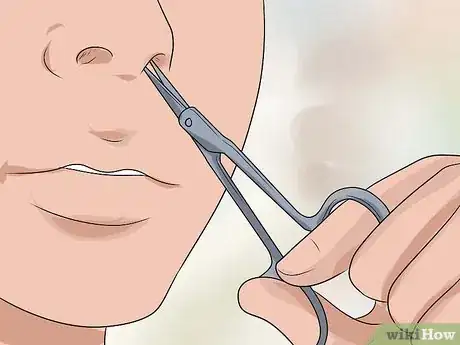
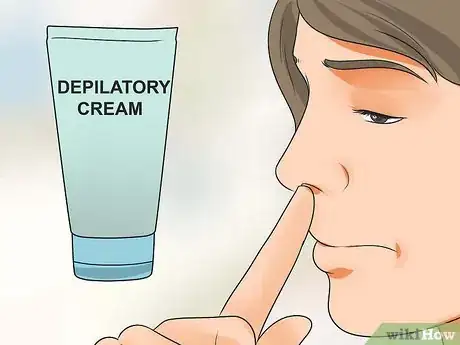

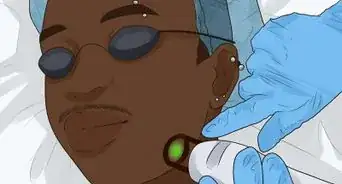
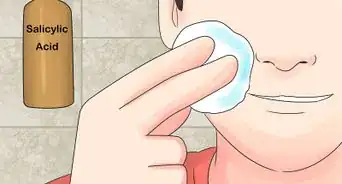
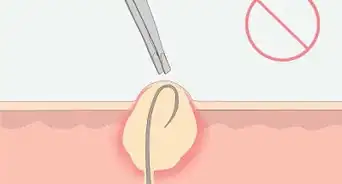
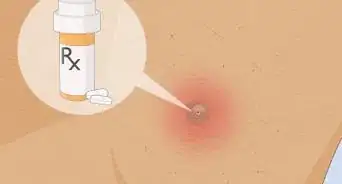
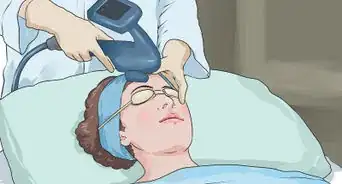
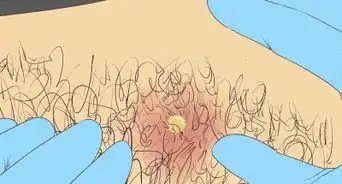
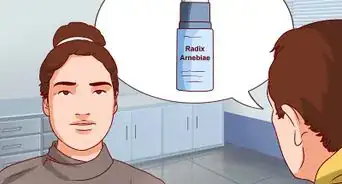

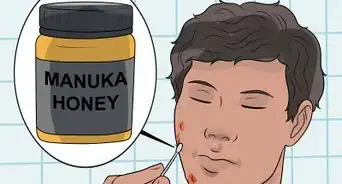
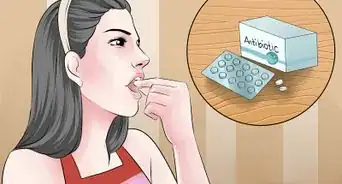
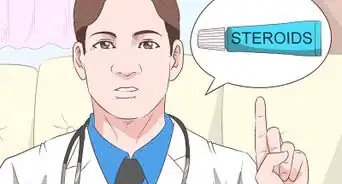
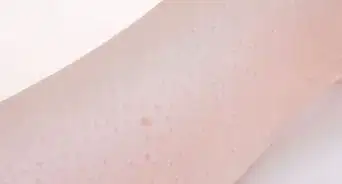
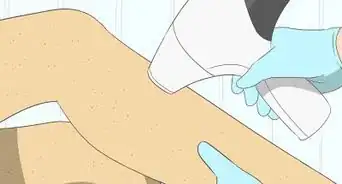
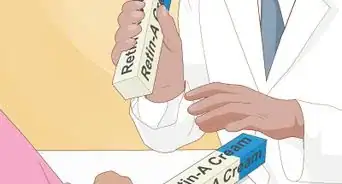









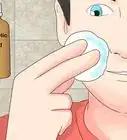
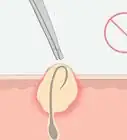
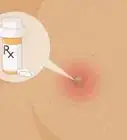



































Medical Disclaimer
The content of this article is not intended to be a substitute for professional medical advice, examination, diagnosis, or treatment. You should always contact your doctor or other qualified healthcare professional before starting, changing, or stopping any kind of health treatment.
Read More...